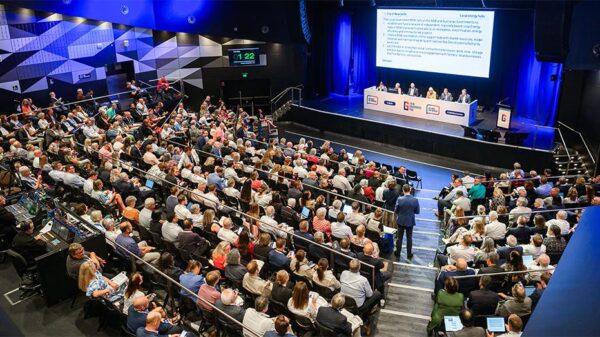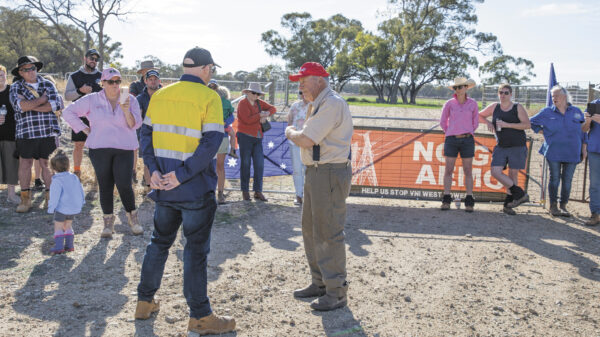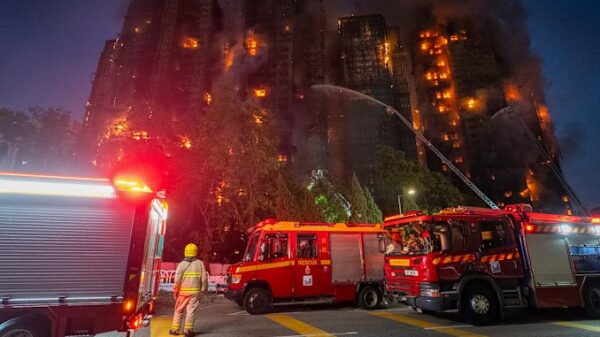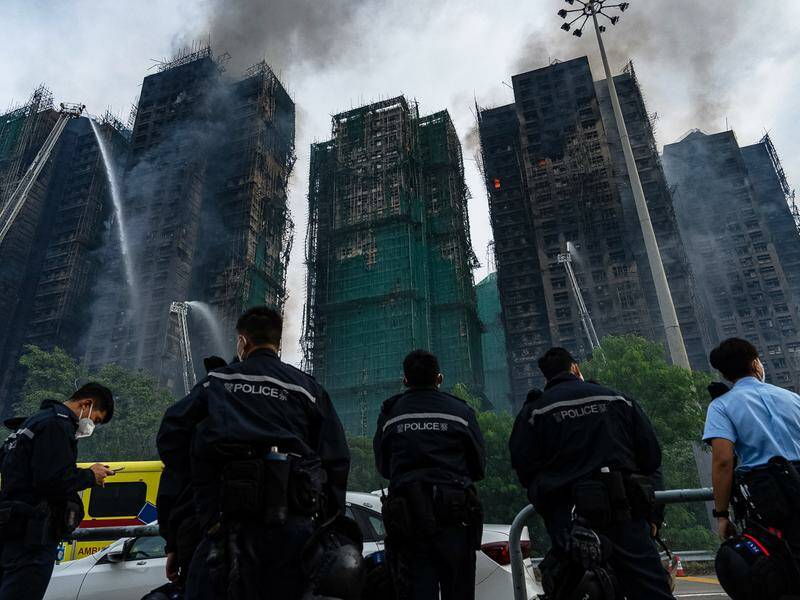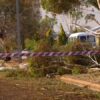A catastrophic fire at the Wang Fuk Court housing complex in Hong Kong has resulted in the deaths of at least 44 people and left nearly 300 unaccounted for. The blaze, which began on the afternoon of March 15, 2024, has been attributed to what authorities describe as “grossly negligent” practices by a construction firm allegedly using unsafe materials during ongoing maintenance work.
Firefighters faced immense challenges in their rescue efforts due to intense heat and thick smoke. As of Thursday morning, they had managed to bring the fire under control in four of the seven blocks within the complex, while operations continued in three others. Video footage captured approximately 22 hours after the fire erupted showed flames still raging from two of the 32-storey towers, which were enveloped in green construction mesh and bamboo scaffolding.
The situation has drawn attention not only for the tragic loss of life but also for the safety standards of the construction practices in place. Eileen Chung, a police superintendent, stated, “We have reason to believe that the company’s responsible parties were grossly negligent, which led to this accident and caused the fire to spread uncontrollably.” In connection with the incident, three men from the construction company—two directors and one engineering consultant—were arrested on suspicion of manslaughter.
Authorities conducted a search of the building maintenance company’s premises, seizing documents related to Wang Fuk Court. The company has yet to issue a public statement regarding the allegations. The tightly packed complex, located in the northern Tai Po district, comprises 2,000 apartments housing over 4,600 residents in a city already grappling with a chronic shortage of affordable housing.
The fire has already been deemed the deadliest in Hong Kong in over 75 years, surpassing the 1948 warehouse blaze that claimed 176 lives. Local officials have compared its severity to the 2017 Grenfell Tower fire in London, which resulted in 72 fatalities due to the use of flammable cladding and systemic failures within the construction industry.
In response to the tragedy, John Lee, Hong Kong’s leader, outlined the government’s immediate priorities: “The priority is to extinguish the fire and rescue the residents who are trapped. The second is to support the injured. The third is to support and recover. Then, we’ll launch a thorough investigation.”
As rescue operations continue, approximately 279 people remain uncontactable, while over 900 individuals have been relocated to temporary shelters. The city is in mourning, with many residents expressing anger and frustration over perceived negligence and cost-cutting measures that may have contributed to the disaster.
On social media, videos surfaced showing construction workers smoking on the bamboo scaffolding surrounding one of the complex’s blocks during renovations, raising further concerns about safety protocols.
Chinese President Xi Jinping has called for an “all-out effort” to extinguish the fire and minimize casualties and losses, according to the state broadcaster CCTV. The Hong Kong government had initiated a phase-out of bamboo scaffolding in March 2024, citing worker safety after a series of incidents that resulted in the deaths of 22 scaffolders over five years.
Wang Fuk Court, which has been in use since 1983, is a part of the government’s subsidized home ownership scheme, making the tragedy all the more poignant in a city where affordable housing is in critically short supply. As the investigation unfolds, the community remains on high alert, grieving and demanding accountability for this devastating incident.

